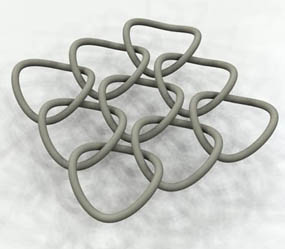5.1. Transformations. As tilings can be used to generate weaving patterns, also weaving patterns themselves can be used to generate other weaving patterns. We will discuss and illustrate some of the possible transformations that can be used to generate new weaving patterns and also new weaving structures.



Figure 21a: One defect
Figure 21b: One loop
Figure 21c: Loop weaving

Figure 22: Three way


Figure 23: Rhythm 2-2
Figure 24a: Rhythm 3-3


Figure 24b: Rhythm 4-4
Figure 24c: Surface